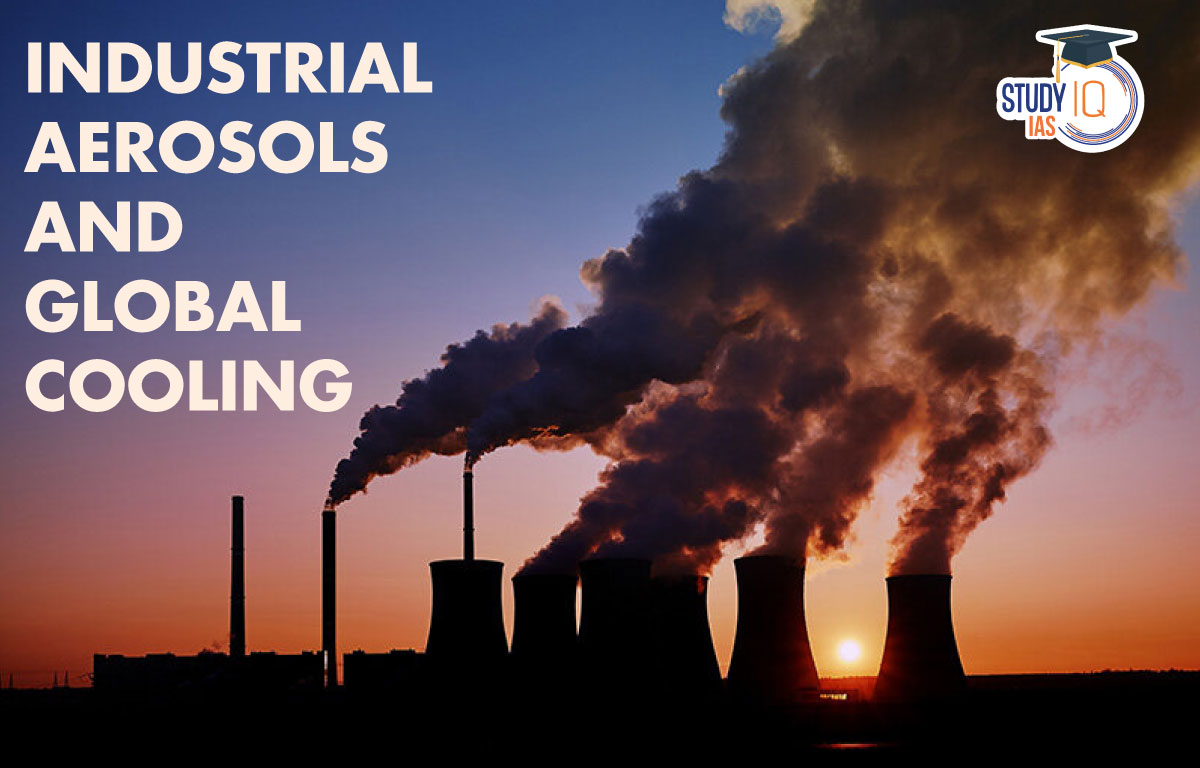Table of Contents
Context: A new study has found that inactive volcanoes contributed 66% to sulphate emissions, known to cool the planet, in the preindustrial era.
Key Findings of New Study
- Emission from Inactive Volcanoes: Previous studies estimated that the amount of sulphur dioxide released by volcanoes is smaller compared to anthropogenic sources.
- New study reveals that inactive volcanoes contributed 66% of sulphate emissions suggesting they were more abundant than previously estimated.
- It has been found that inactive volcanoes release up to three times the rate of sulphate emissions than previously believed.
- This new finding is important for global climate models as current models underestimate volcanic sulphur emissions from passive degassing (non-eruptive volcanoes) during the preindustrial era.
- Amount of Cooling: The amount of cooling depends on how abundant sulphate aerosols were in the atmosphere before humans started burning fossil fuels.
- A higher abundance of sulphate aerosols in the preindustrial atmosphere means anthropogenic sulphate has a relatively small cooling effect.
- If the preindustrial aerosol is minuscule, the anthropogenic sulphate has a large cooling effect.
- Impact of Hydrogen Sulphide: Climate models do not consider hydrogen sulphide, which escapes from inactive volcanoes.
- These gases react with oxygen to produce sulphur dioxide, thus forming sulphate aerosols.
- Scientists previously assumed that hydrogen sulphide contributes less than 1% to the total atmospheric sulphur concentration.
- The new study estimates hydrogen sulphide emissions from volcanoes have contributed significantly to atmospheric sulphate.
- Cooling in the Arctic: The researchers found that higher preindustrial emissions reduced anthropogenic aerosol cooling in the Arctic.
- It has also estimated that anthropogenic aerosols have nullified 60% of human-induced warming in the Arctic, which is warming at a rate almost four times higher than the global rate.
What are Aerosols?
- Aerosols refer to fine solid or liquid particles suspended in the atmosphere, where they reside typically for days to weeks before falling to the ground or being washed out by rain or snow.
- Visible forms of atmospheric aerosol plumes include smoke, smog, haze and dust.
- Source: They arise both from human activities involving burning of fossil fuels, biofuels and from natural sources (such as desert dust, sea spray and volcanic eruptions).
- Types: Sea salt, dust, and volcanic ash are three common types of aerosols.
Impact of Aerosols
- Climate: Aerosols have a profound impact on the climate because, just like greenhouse gases, they are able to change the Earth’s “radiative”, or energy balance.
- Aerosols can control how much energy from the sun reaches the planet’s surface by changing the amount that is absorbed in the atmosphere and the amount that is scattered back out to space.
- Aerosols also affect rainfall, reducing rain in areas like India and China where it is desperately needed for food production.
- They also alter patterns of wind and atmospheric circulation.
- Aerosols can also limit visibility, causing haze in many parts of the world.
- Global Warming: There is only one aerosol, soot, also known as black carbon that actually helps contribute to global warming by boosting the warming effects of greenhouse gases in the atmosphere.
- Human Health: Aerosols have detrimental impacts on human health, and have been implicated in health problems such as lung damage.
What are Sulfate Aerosols?
- Sulfate aerosols are mixtures of solid or liquid particles that include sulphuric acid.
- Sources: The main sources of sulphate aerosols are sulphur dioxide (SO2), of which volcanoes and fossil fuels are the major natural and anthropogenic sources, respectively.
- Dimethyl sulphide (DMS), which is emitted from oceanic phytoplankton and land vegetation, is also one of the natural sources.
How do Sulfate Aerosols Cool the Planet?
- Sulfate aerosols also have a strong cooling effect on Earth, both through their ability to scatter incoming light and because of their propensity to increase cloud formation and reflectivity.
- Tropospheric Sulfate Aerosols: Most sulphate aerosols exist as a haze in the troposphere, the layer of the atmosphere that goes from the ground up to about 9 miles (15 km).
- These sulphate aerosols start as emissions from burning fossil fuels and last only a few weeks.
- Tropospheric sulphate aerosols act as condensation nuclei that cause cloud cover to increase.
- Volcanic Aerosol: A severe volcanic eruption can send natural sulphate aerosols up into the stratosphere, the layer in the atmosphere above the troposphere.
- Sulphur dioxide in reactions with other atmospheric gases is converted to sulphur trioxide, which combines with water to form sulfuric acid.
- The volcanic plume reacts with water vapour to create a huge sulphate aerosol that impacts global climate by reducing the solar radiation that could reach Earth.
- Sulfate aerosols in the stratosphere scatter radiation coming from the sun and absorb terrestrial (from Earth) radiation, causing a cooling effect.



 AIBE 21 Exam Date 2025: Check Official S...
AIBE 21 Exam Date 2025: Check Official S...
 JPSC Exam Calendar 2026 Released: Check ...
JPSC Exam Calendar 2026 Released: Check ...
 MPPSC Eligibility Criteria 2026, Age Lim...
MPPSC Eligibility Criteria 2026, Age Lim...

























